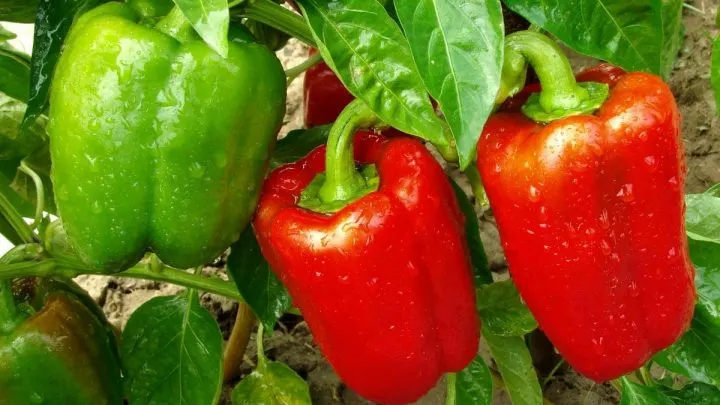In today’s article, we will talk about how often to water pepper plants. You will definitely want to have this wonderful vegetable in your garden.
In addition to being excellent, healthy, full of various vitamins, mostly vitamin C, they look really wonderful with their green-red combinations.
The smells are really intoxicating, enchanting, and most importantly for you and your children, organic and homemade!
Today, in addition to the planting schedule, we will also mention the entire care guide for these vegetables, their features, history, most common diseases and pests, and of course your favorite part, the fun facts section.
If you want to get these vegetables for your home or learn how often to water them without making a mistake if you already have them, let’s get started.
Pepper Plant Features
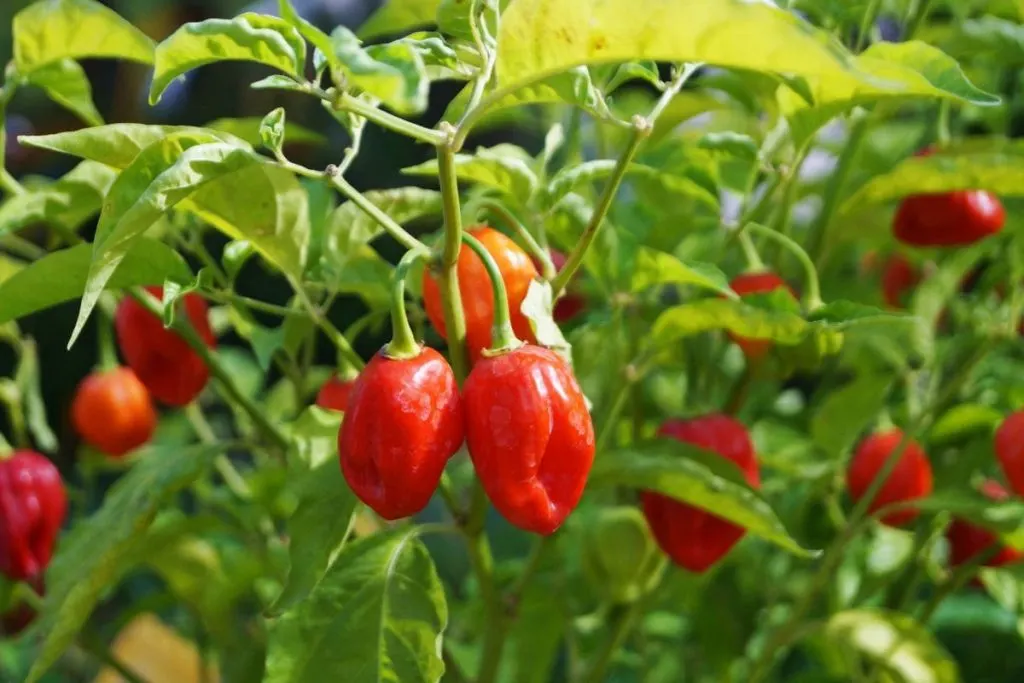
The pepper plant is an annual vegetable crop and belongs to the family of helpers. It has been cultivated for thousands of years in areas of tropical America.
It arrived in Europe via the Spaniards in the 15th century and was used as a spice. Hungary is one of the largest growers and processors of peppers, and they are best known for red peppers. If you are interested in plants with red stems take a look at: Plant with red stems.
Peppers grow up to 32 inches tall. The leaves are arranged alternately on the upright stem, egg-shaped and pointed. The flowers are located at the ends of the stem and are located opposite, they are white in color.
The fruit is a multi-seeded bean with a smooth texture. It comes in different sizes, shapes, and colors, which can range from pale yellow, light, and dark green, to orange, red, and even brown.
Peppers have a seed pod at the top where most of the flat seeds are located. The rest of the seeds are between the partitions with which the pepper is divided.
The pepper plant is divided into sweet and hot peppers (spicier chili peppers). Pepper fruits contain the alkaloid capsaicin, which is why they have a hot taste, the only thing that Babura pepper does not contain at all.
Pepper Plants Maintenance And Care
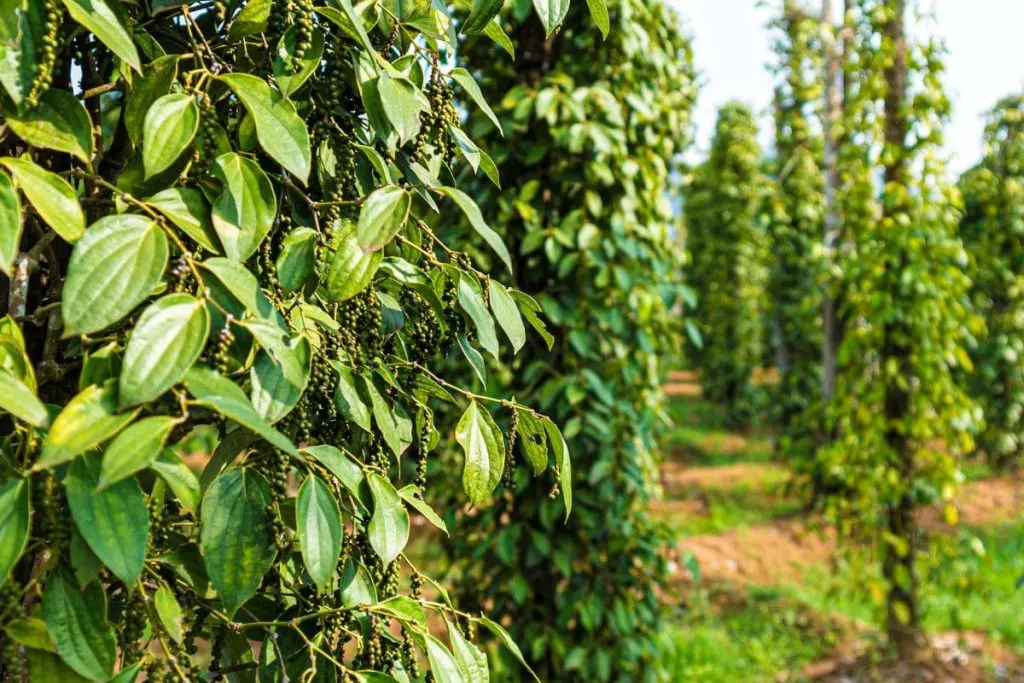
As we stated at the very beginning, in addition to the watering schedule, this article will also deal with issues of the general care guide of this vegetable. To have perfect fragrant pepper plants in your garden without yellow spots on the fruits, without yellow spots on the leaves and dry leaves, stay with us and learn below the tips and tricks for light, fertilizer and suitable soil for this vegetable.
How Long Can Pepper Plants Go Without Water?
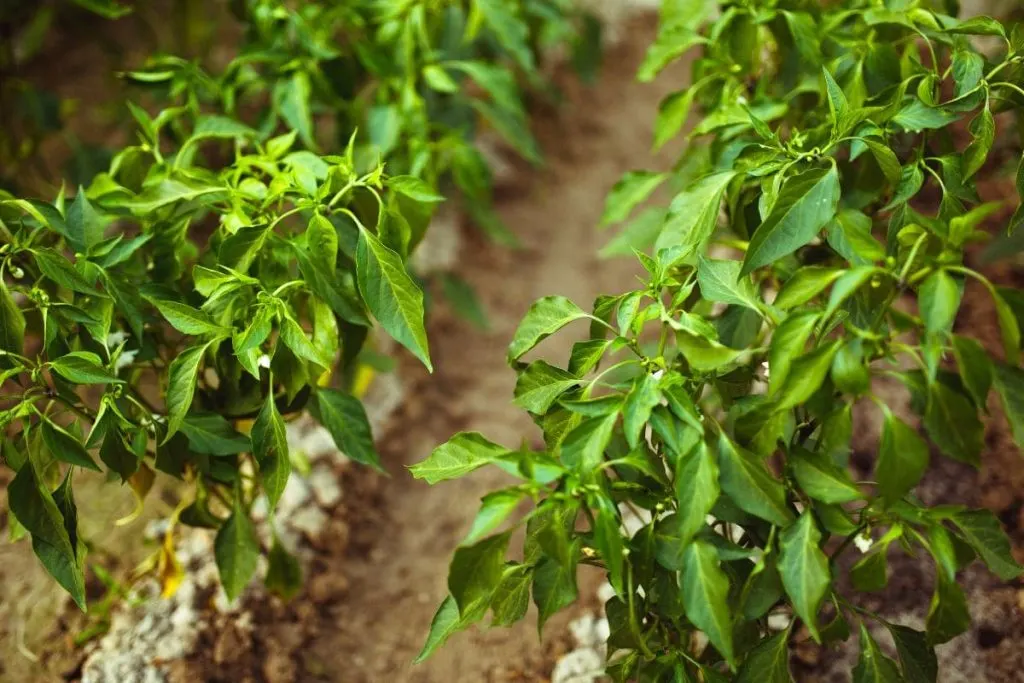
Peppers can survive without water and watering for 7 days. However, this doesn’t mean that it will be in excellent condition. You will see in their appearance that they look limp, and drier than usual and you will notice the difference for sure.
Do not wait 7 days to water it, even 5 is too much, and 7 days is already the suffering of the plant to survive while drawing water from the roots. Frequent watering/watering frequency is more than important for vegetables. Based on that, it dictates how good its fruits will be.
How Often To Water Pepper Plants? Watering Pepper Plants Schedule
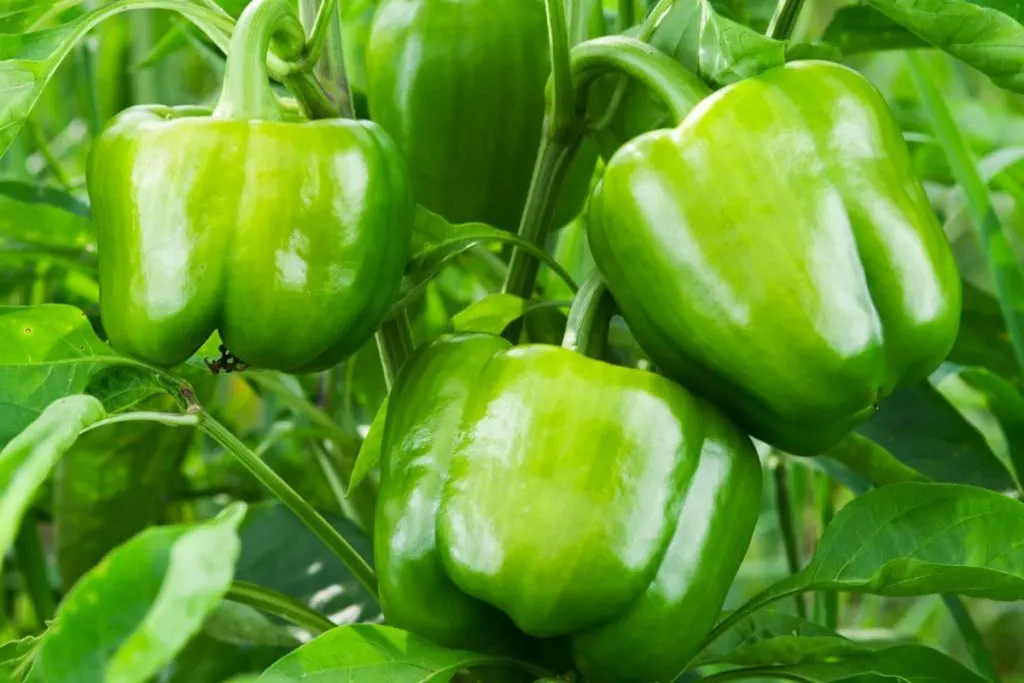
Pepper is best watered by pouring a large amount of water into the space between the rows. It is watered next to the roots or as far as possible from the roots and never on the leaves.
You should also pay attention to the temperature of the water, if it is very cold, it will shock the plant and it could lose its flower or produce bad fruits.
This is why it would be good to use rainwater or stagnant water. The “drip by drop” system is most often used, in this way watering is possible at any time of the day. Soil moisture should be maintained at 70-80%.
How Long Is The Period Of Watering Pepper Plants?
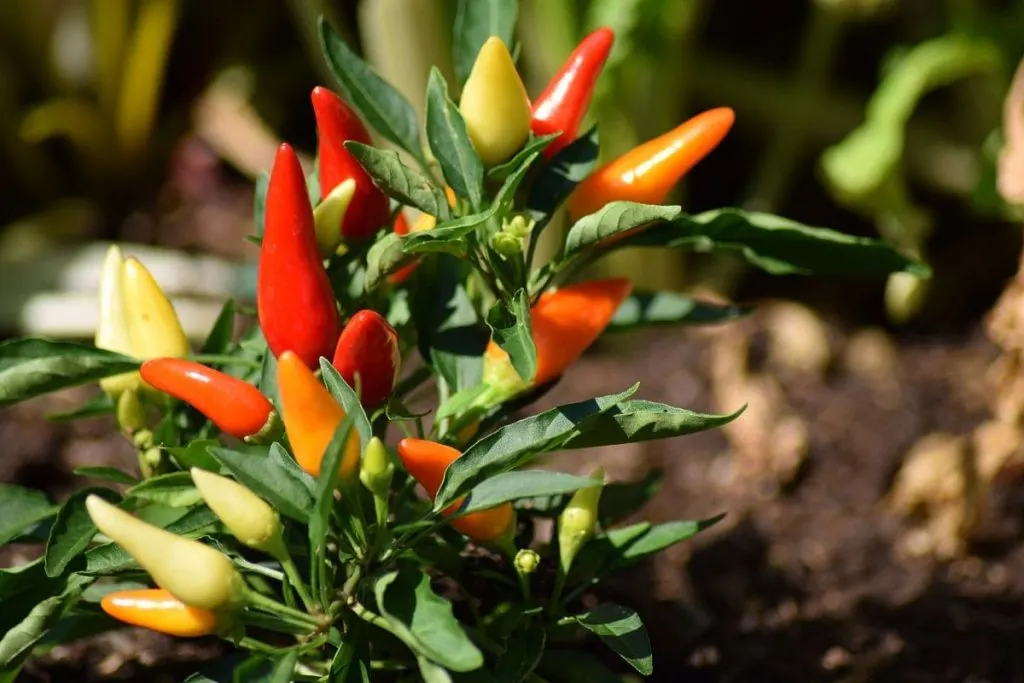
Pepper plant has high water requirements, and this is ensured by irrigation. For some varieties, the optimal soil moisture should be 60 percent of the field water capacity, and due to the weak suction power of the roots, it requires more frequent irrigation.
There is no exact period of watering pepper plants, you use to water them their entire growing process. When growing peppers, you have to make sure you have time to water them or provide them with a pipe that’ll water them very often.
Make Sure You Only Water The Soil, Not Leaves
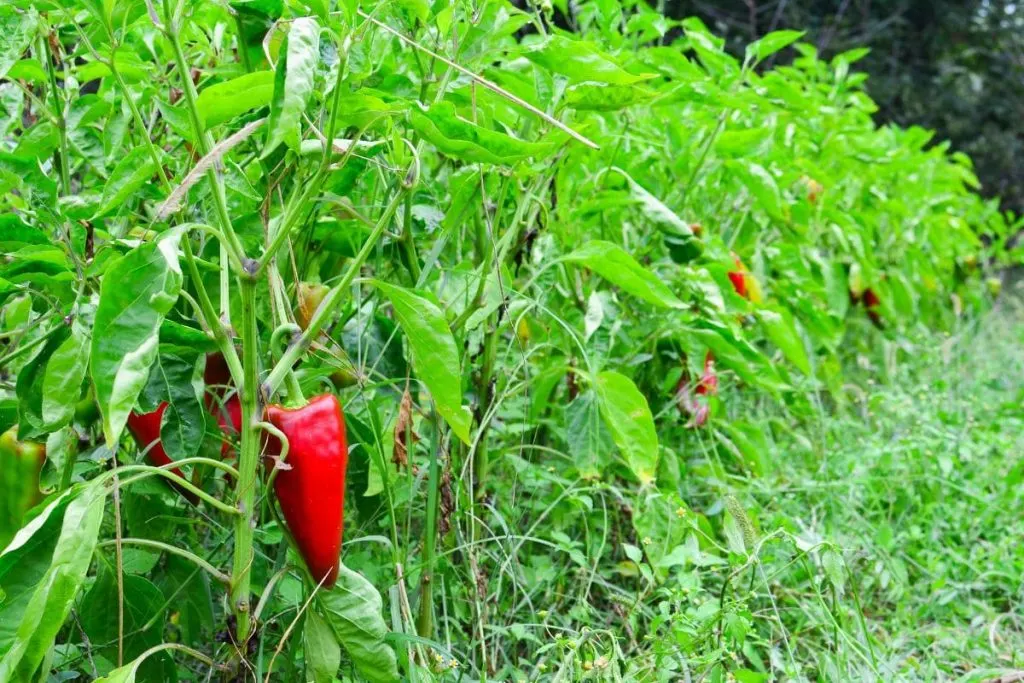
When you’re using a soaker hose for watering, sometimes it’s very easy to lose control over watering and watering the entire plant.
Leaves, stem, soil, all of it. That surely isn’t good especially when the temperatures are high and your plant is receiving a lot of light.
Soil moist, but leaves should be dry, make sure you follow this. Wet leaves can lead to many problems you don’t want to face with.
Dry The Soil Between Watering
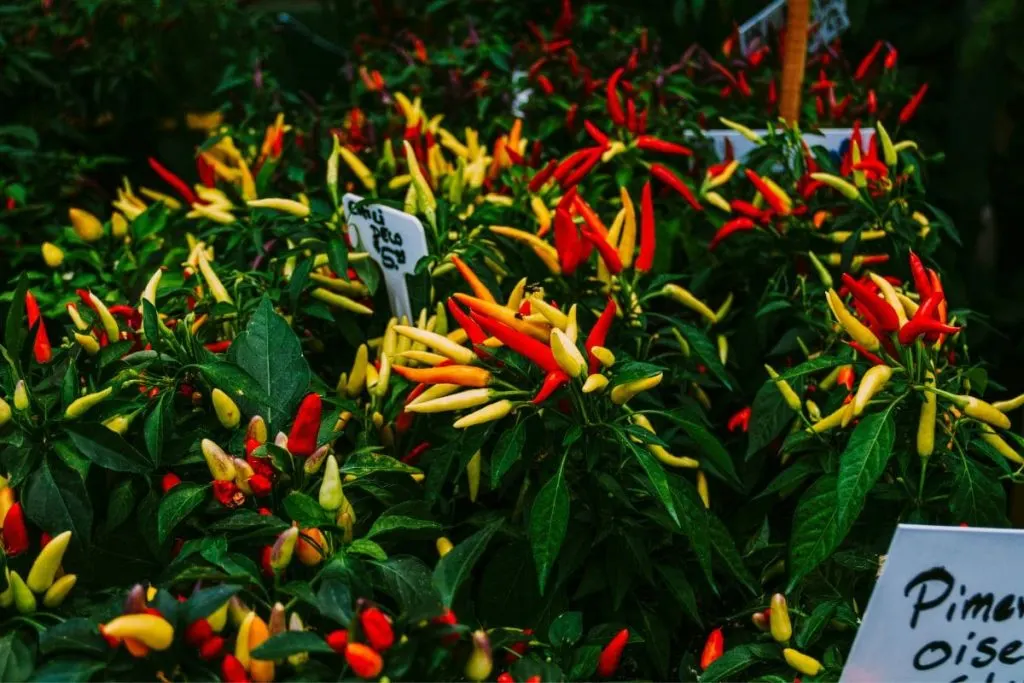
Garden soil should be dry between waterings. When watering peppers, if you avoid the fact you see lots of water on the top of the soil, you’re doing it wrong. Standing water isn’t good for any flower, plant, or vegetable.
It can literally kill your plant very very soon. The watering process should have this circle: water it until the soil is moist, when the soil is dry, but not too dry, water it again. Soil’s moisture level should be medium.
Overwatering Pepper Plants Struggle
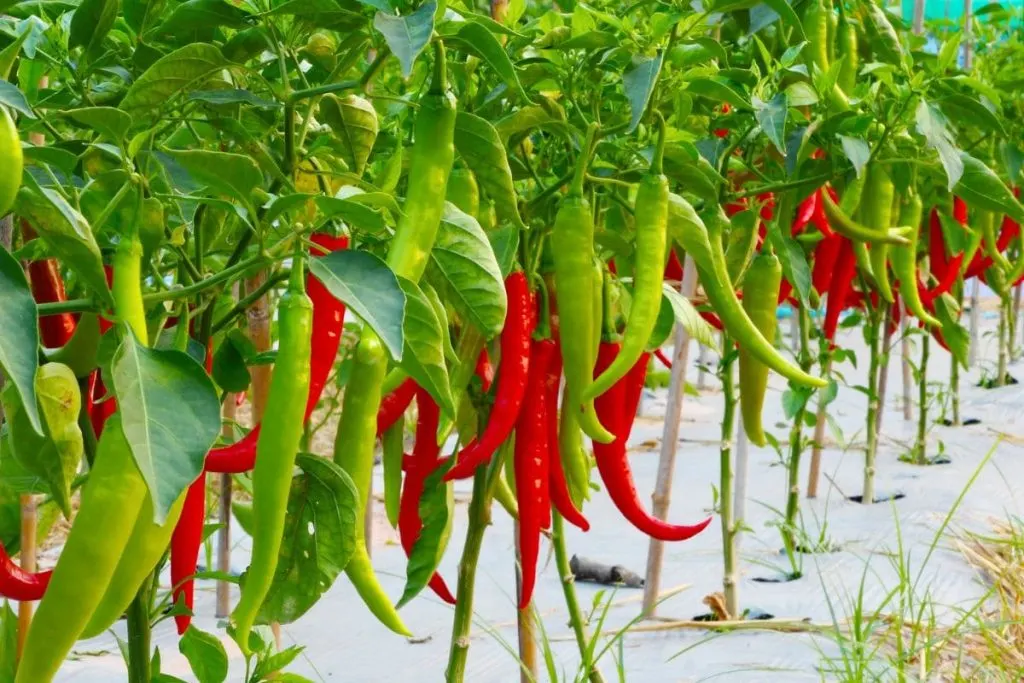
There is a big difference between moist soil and/or soil moisture and excess water that is very obvious in pepper plant appearance and on the soil of course. Their soil shouldn’t be sticky and super wet, it should be moist.
Excess moisture isn’t good for any plant you have and waterlogged soil creates multiple problems. Make sure you have good drainage holes if you’re growing veggies in the pots.
If you’re not sure how to “track this”, use a moisture meter to be sure. It’s very cheap and it will help you a lot.
Too much water, just as too much sunlight can kill your potted plants very easily. Proper watering and good light conditions lead to healthy “fruits.”
How To Be Sure You Poured Enough Water In Your Pepper Plant?
If the soil is too sticky and if you can spot water on the top of the soil, it definitely means you overdid it. When planting peppers you just have to make sure you’ll follow their regular watering schedule.
What Is The Best Water Type For Pepper Plants?
They are exposed to more sun, and many outdoor conditions that you can’t control and they are pretty used to it. There won’t be much difference between tap water and rainwater.
Light Conditions For Pepper Plants Matter
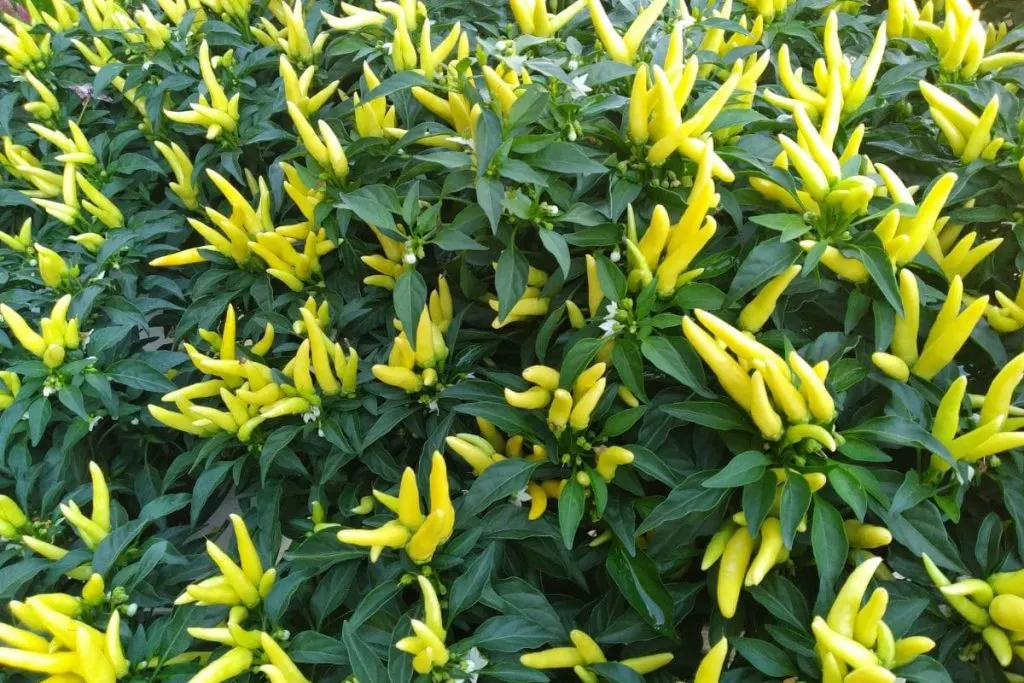
It is preferable to keep the container on the windowsill in a closed space. On very sunny balconies, the “lights” suffer a lot from the air, the leaves can be damaged, the flowers fall off, and the fruits are very deformed and lack seeds.
In the shade, seedlings bloom reluctantly, produce few fruits, and may suffer from wilting. Bushes of hot decorative peppers indoors feel extremely uncomfortable on shelves, in the refrigerator, and in the closet – far from the sun and fresh air.
Soil Type Matters As Well
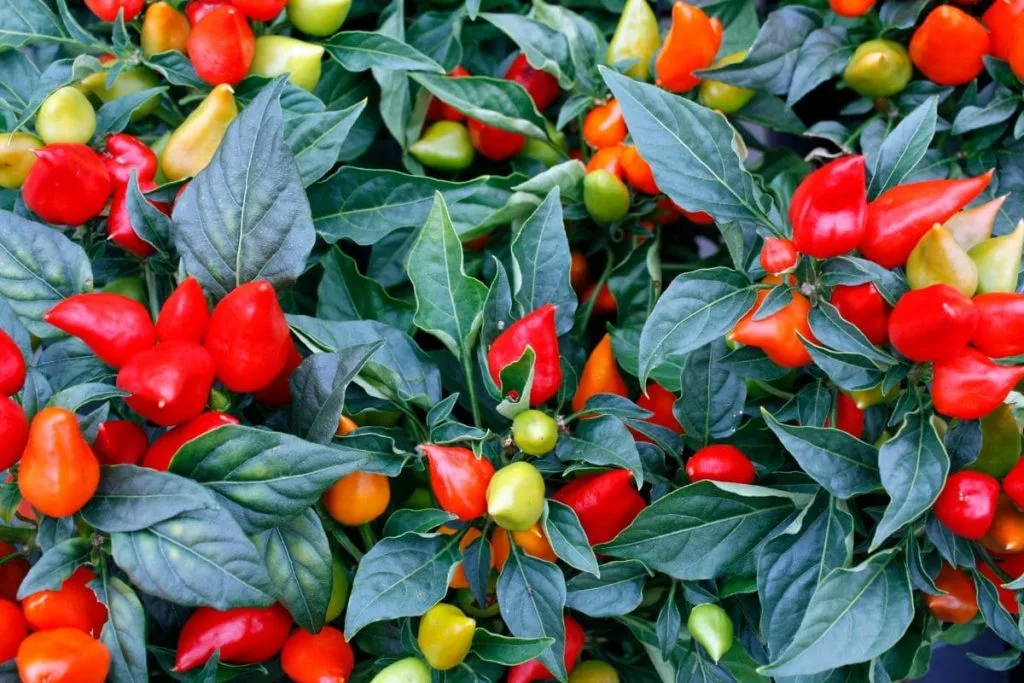
It requires lighter soils rich in humus, with a neutral pH of 6.5 – 7, and characterized by well-balanced water-air conditions.
Cultivation on acidic soils (below pH 6) is possible with mandatory liming of the soil. Peppers require cultivation in crop rotation and must not appear in cultivation on the same plot before 4-5 years have passed.
Temperature And Humidity For Pepper Plants

Peppers require a lot of heat because they stop growing at a temperature of 45 to 50 F. It also requires a lot of water, due to the weak suction power of the roots.
It is also important to maintain the neutrality of the soil. Air humidity should be medium, so around 45-50%.
Best Fertilizer For Pepper Plants
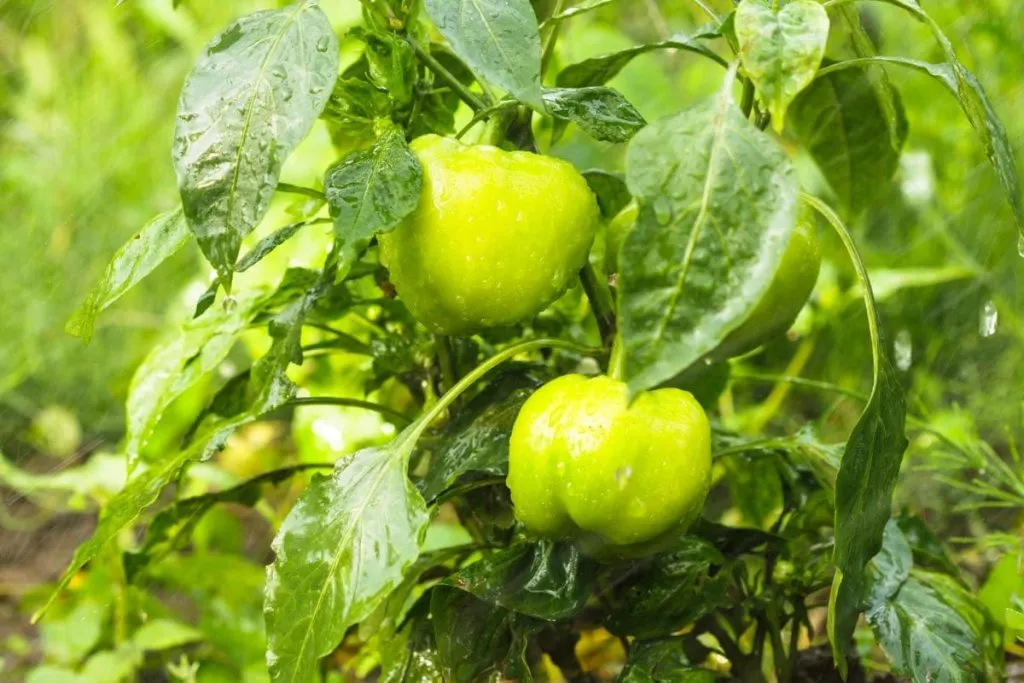
Paprika requires soil with a neutral pH, which needs to be limed if the pH is lower than 5.5. Which can also be controlled by calcium fertilization.
It responds extremely well to fertilization with compost or semi-ripe manure, especially in combination with mineral fertilizers.
Manure improves microbiological activities and preserves soil structure and looseness. Feeding is done 2-3 times. The first time after the peppers take root, and the second time when the first fruits are the size of walnuts.
Pruning Pepper Plants
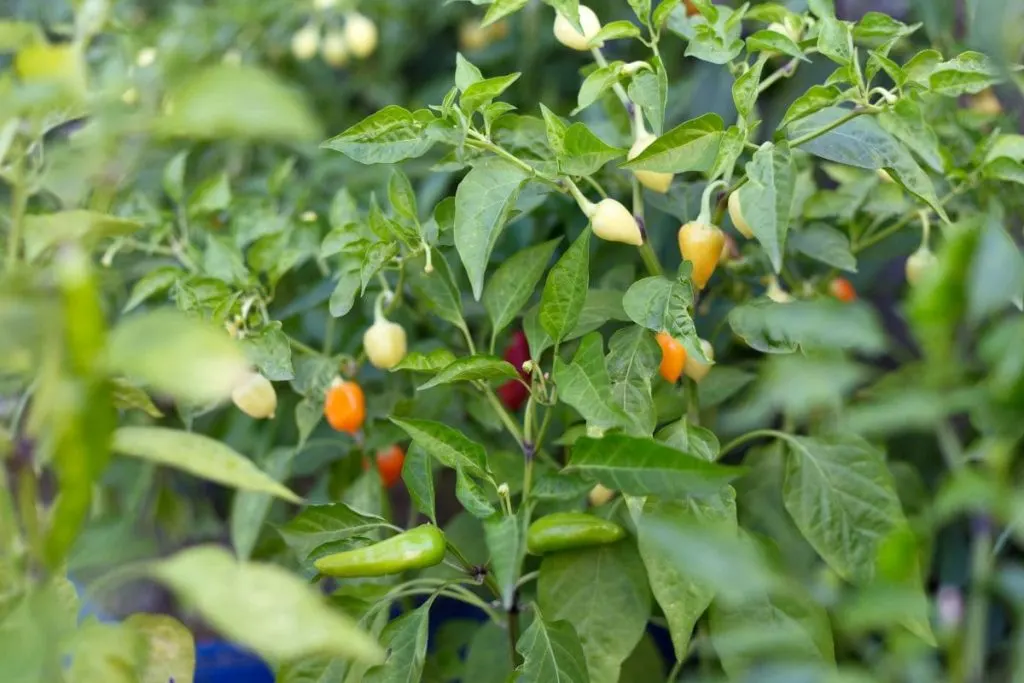
Peppers do not need to be cultivated, then the fruits are smaller and develop more slowly. If we invest a little effort and time, we can have fruits that are larger and healthier. When growing lush varieties, it is best to grow on two branches.
Pruning is done every two weeks, removing excess branches when they reach a height of 1 inch.
It is also important to maintain the load of the plant with fruits. There should be 5 – 6 fruits evenly distributed on the branch, or 10 – 12 fruits per plant. It is also important to remove the lower, yellow leaves and diseased fruits.
Pepper Plants Plantation Maintenance
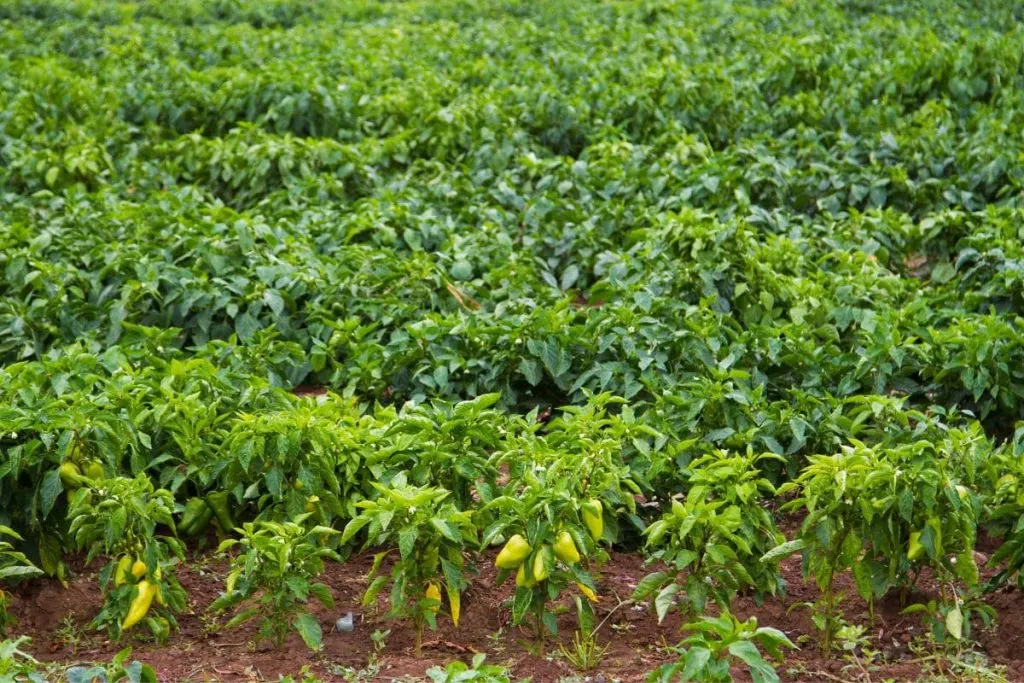
Plant maintenance depends on the way peppers are grown. If you have grown pepper based on foil, there is no cultivation of the plantation, but if it is cultivated without foil, then it is necessary to shallowly cultivate the plantation two to three times, immediately after irrigation.
It is fed two to three times during outdoor cultivation. The first time ten days after transplanting, and the second time before the first fruits are formed.
The third time a month after the second feeding. Picking of seedlings begins about 20 days after sowing when at least two permanent leaves develop on the plants.
After picking the peppers, the plants need to be shaded from the strong sun, so it is recommended to put a green net to prevent the water from evaporating.
How To Propagate Pepper Plants?
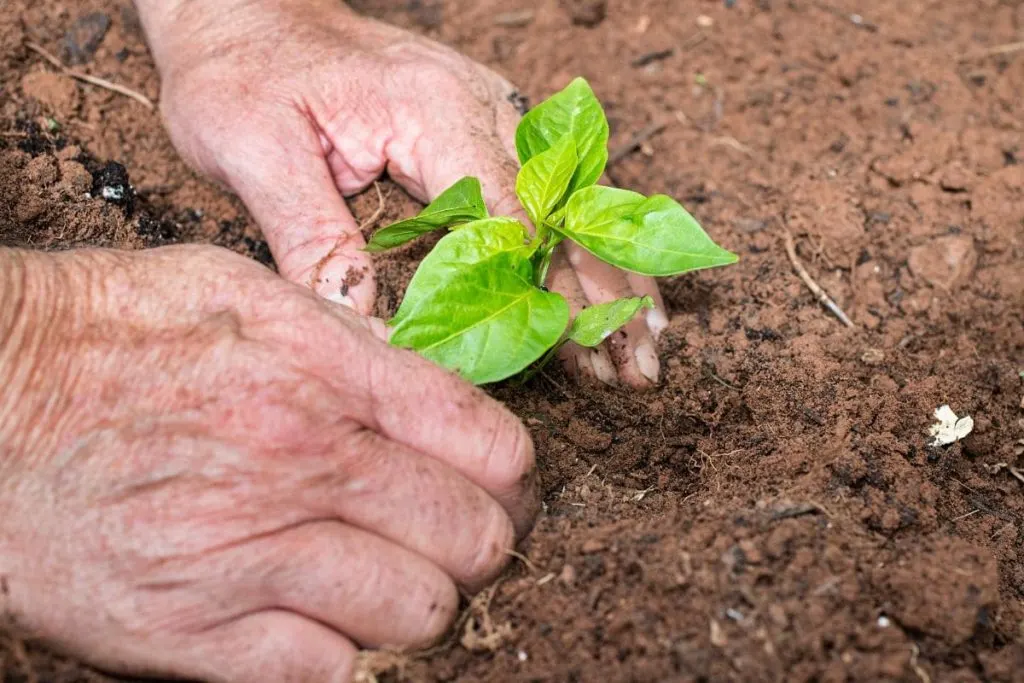
Peppers seedlings are sown in ready-made nutrient substrates and it is not necessary to feed the seedlings. Hardening off seedlings must be carried out 10-15 days before planting, using a known method.
Seedlings 50-65 days old are planted. In continental areas, pepper is grown from seedlings. Planting outdoors begins when the soil is warm enough and the danger of late frosts is over.
Repotting Indoor/Outdoor
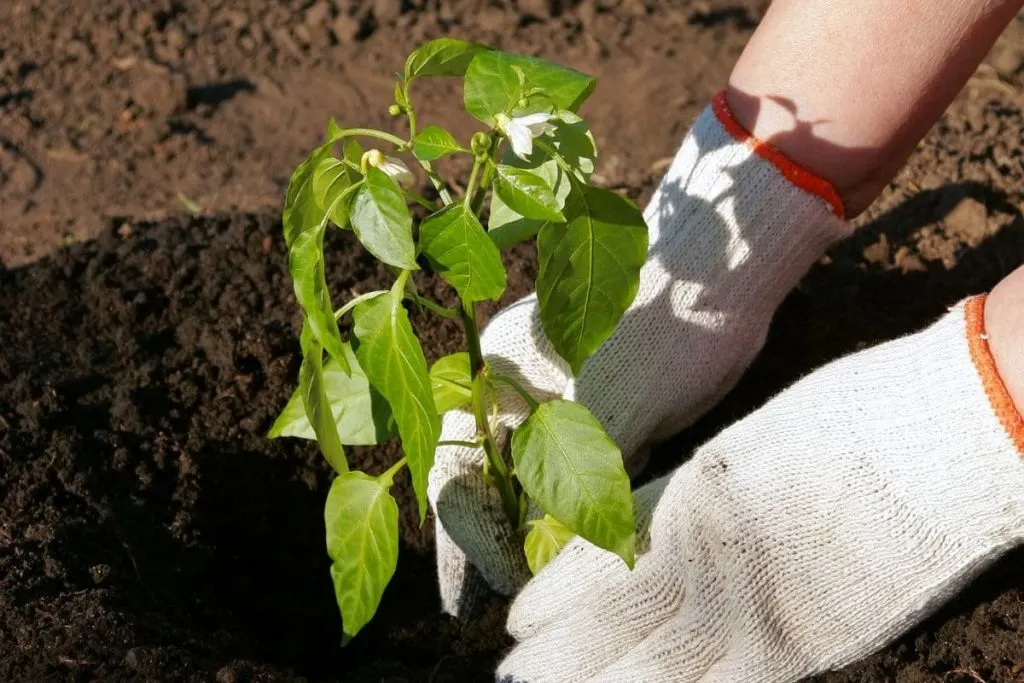
Peppers do not require transplanting. Regardless of whether you grow them in containers, pots, or in the ground and normal vegetable seedlings, there is no need to transplant them.
It is advisable to transplant peppers when you notice that the soil is attacked by pests, and you do not want to use chemicals. In this case, it is even preferable to transplant your pepper plants to another place. Hotter peppers face more problems so they might be needing repotting sooner.
Pepper Plants Fruit Harvest
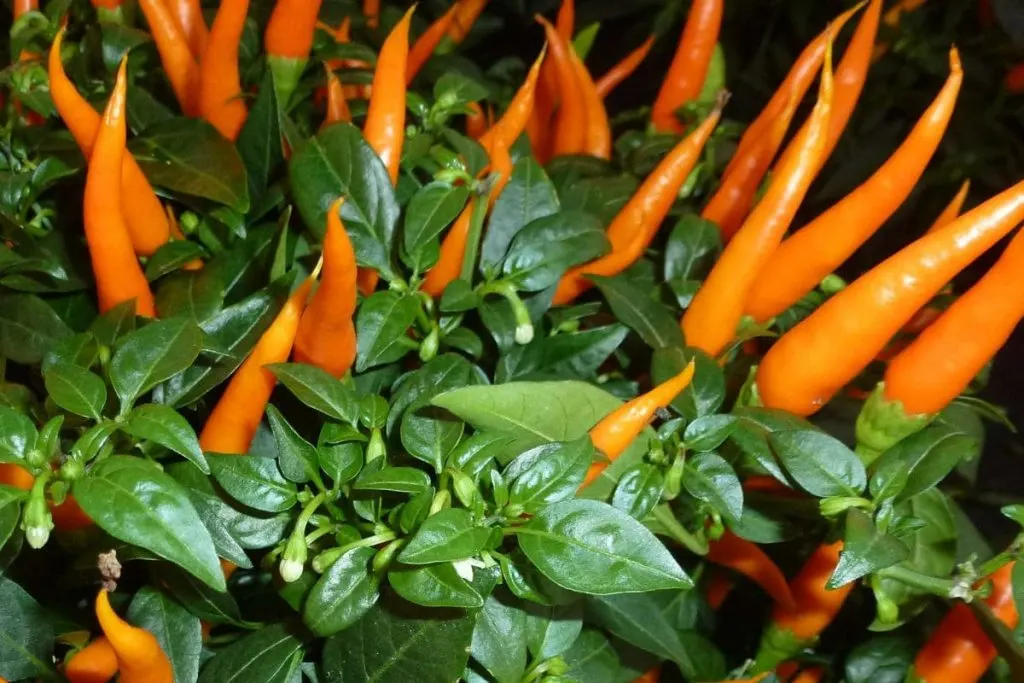
Peppers are one of the few types of plants that can be harvested for consumption before they are fully ripe. Large meaty babura can be consumed in green, yellow, and red. Each is delicious, but they differ in taste.
The redder it is, the sweeter this type will taste. In hot peppers, the color of the fruit is not related to the spiciness, because that specific flavor comes from the seeds. If you plan to dry peppers, it is better to pick only fully ripe fruits.
Pepper Plants Most Common Issues
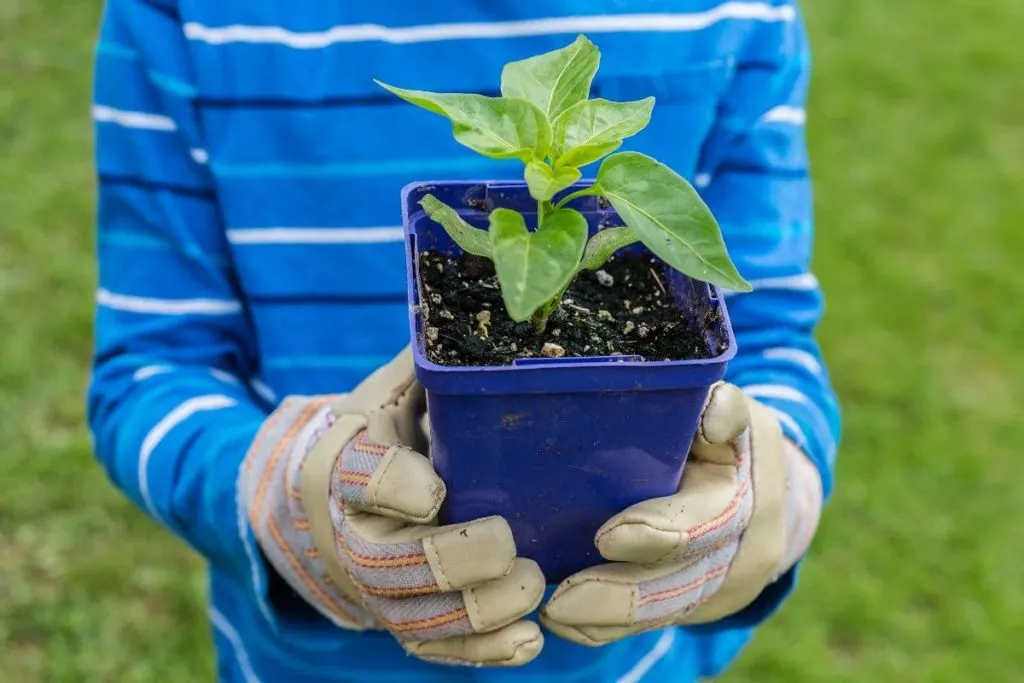
All of you who had vegetables on the balcony in pots, in the garden, or somewhere else surely know how difficult it can be to deal with vegetable problems.
It even seems to me that they get diseases and pests much more often and easily than house flowers and plants.
It is simply a fact. Many vitamins and nutrients are exactly what pests are looking for, and vegetables have plenty of them. Let’s see what are the most common diseases and pests of peppers and how to recognize them.
Diseases Of Pepper Plants
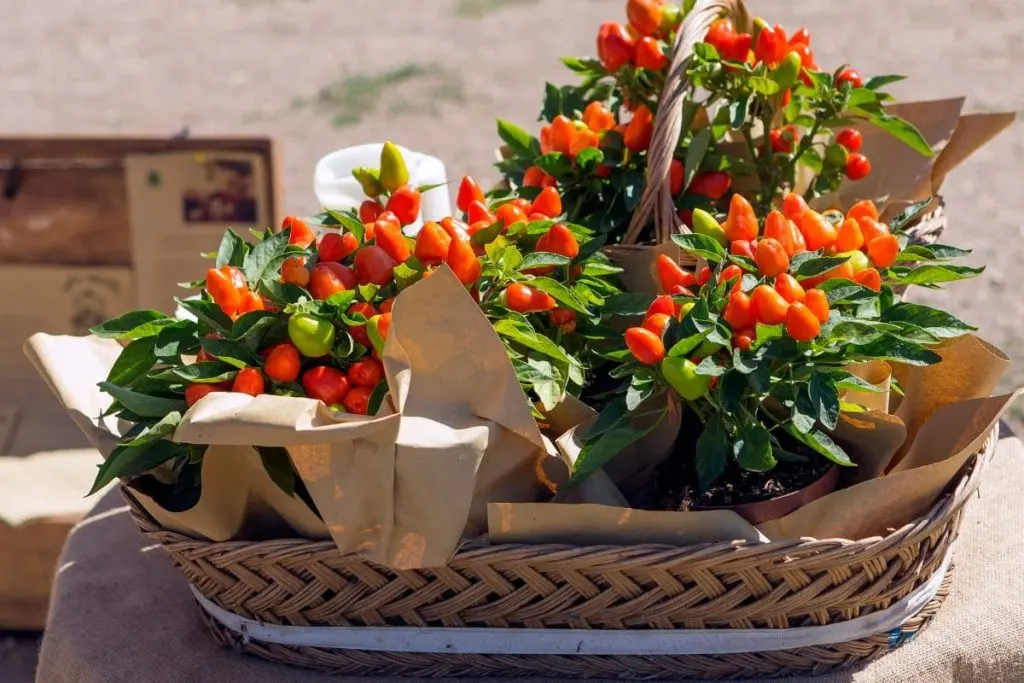
No matter how good your care is, sometimes, nature simply happens and your plants get a disease. In this case, we’re talking about pepper plants and their most common diseases. Let’s check the most common ones.
– Withering peppers
You can notice the presence of this disease by gradual wilting and drying. The leaves soften and hang on their stems although they are still green in color. It occurs after abundant watering, during the summer when the days are hottest (July, August). There is no direct fungicide protection.
– White rot
White rot is a disease caused by fungi. Symptoms are most often visible on the stem at ground level.
A watery spot of an elongated shape is formed, which gradually expands. The leaves above that place are drying.
Snow-white fluffy mycelium is found in the attacked place. Unfortunately, fruits can also be infected. It is important to implement preventive measures and use a fungicide.
– Root system
A fungal disease whose infection occurs during the seedling stage, and can also occur later in the growing season.
In the beginning, the neck of the root turns brown or black. After a while, the plants die. In order to protect the plants from this disease, it is necessary to water the nursery with one of the fungicides, immediately after pricking.
Pests Of Pepper Plants
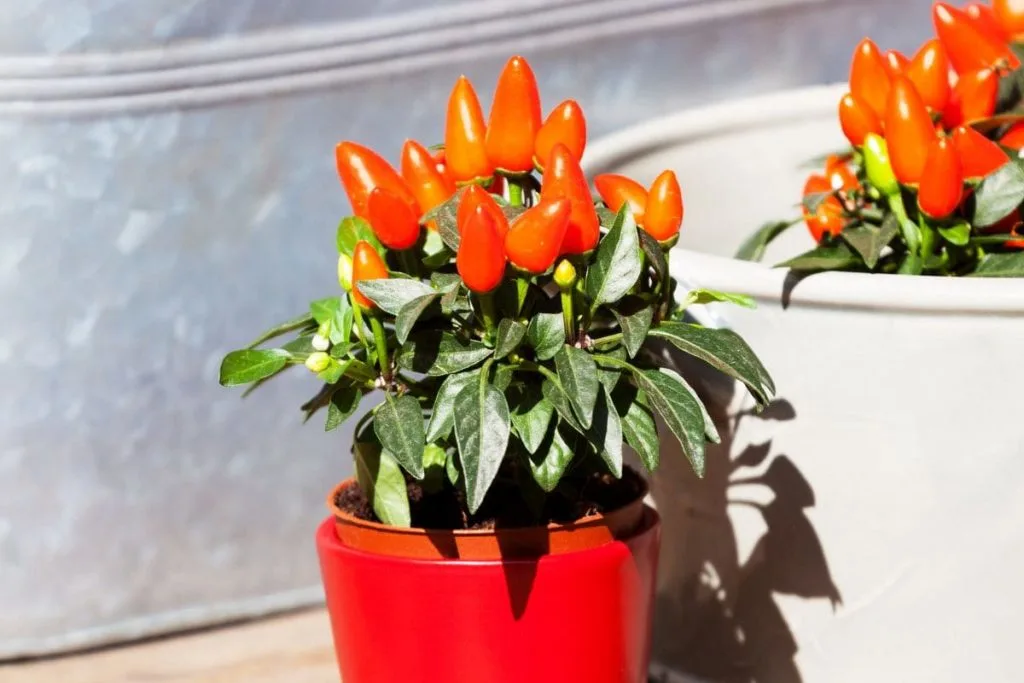
As temperatures rise, the likelihood of pests of peppers grown outdoors and indoors also increases.
Below, read more about the most common pests: tobacco shield moth, California thrips, corn moth, leaf miner, and slugs.
– Tobacco shield moth
The tobacco shield moth is a tiny white insect only 0.5 inches long. The symptoms are numerous chlorotic spots, honeydew on fruits and leaves, and later on, in these sticky places, sooty fungi appear.
– California thrips
California thrips are one of the biggest pests of peppers. A small insect with an elongated body found on pepper fruits.
It is best suited to newly planted fruits, which is why such fruits remain small and deformed. In a heavily infected pepper, there are almost no normally developed fruits. Insecticides are recommended for control.
– Flaming pepper
The easiest way to spot a bell pepper is by looking at the color of the roots. It occurs around the root neck of the plant when it takes on a dark black color.
It most often appears after excessive amounts of water, when this fungal disease develops. The fungus can overwinter in plant residues or in the soil.
Pepper Plants And Their Medicinal Properties
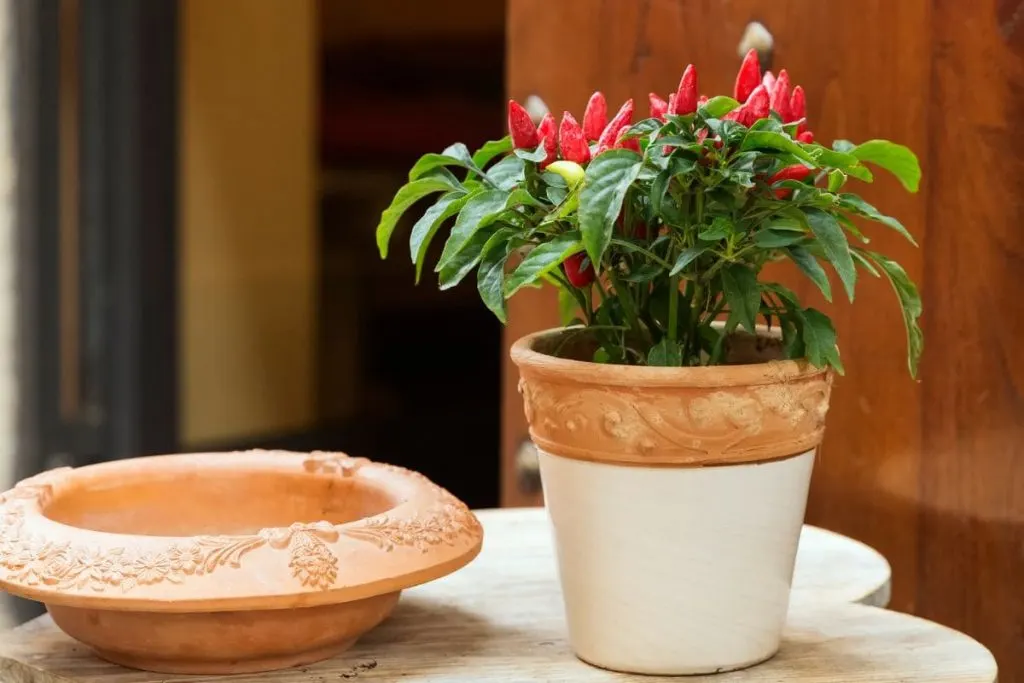
Almost 92 percent of paprika consists of water, and in addition to providing you with hydration, you will introduce vitamins A, B6, and C into your body. It is an excellent source of fiber and vitamins K, B2, B3, B5, B9, and minerals stand as magnesium and manganese.
It is especially rich in the carotenoid zeaxanthin, which is essential for eye health because it prevents the eyes from being damaged. Research has shown that paprika helps prevent prostate cancer due to the synergy of vitamins A and C, beta carotene, lycopene, and retinoids.
The natural ingredients found in paprika help reduce anxiety and depression, and it is recommended to increase intake during PMS to reduce symptoms. Paprika will protect the body from stress, and bad mood and prevent insomnia.
History And Fun Facts
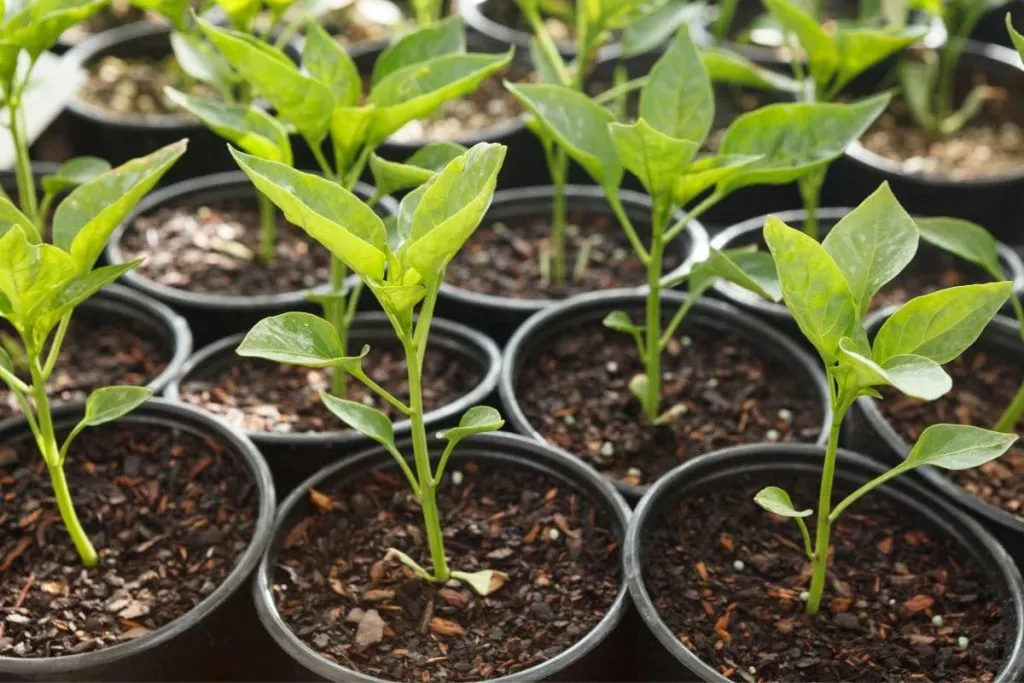
Paprika was already used two to three thousand years ago, as evidenced by painted objects with its motif found in Inca graves.
It was mentioned for the first time in the records of the Columbus physician Chanca from 1494. These peppers were hot and were used as a spice. The Spaniards and Hungarians managed to grow sweet potatoes, through selective selection, only in the 20th century.
Columbus came across dry hot peppers and brought them to Europe, where they thought that this plant must be some kind of pepper due to its hot taste. Since then, until today, paprika has kept its name after pepper. Likewise, paprika is one of the most common words from our area that is used in the English language.
The tip is the mildest, and as we get closer to the stem, the pepper gets hotter and hotter. This is because that part has the most capsaicin, which gives the pepper such a burning sensation. Capsaicin is most present in those thin fleshy parts that connect the body of the pepper to the seeds.
How Often To Water Pepper Plants – Final Thoughts
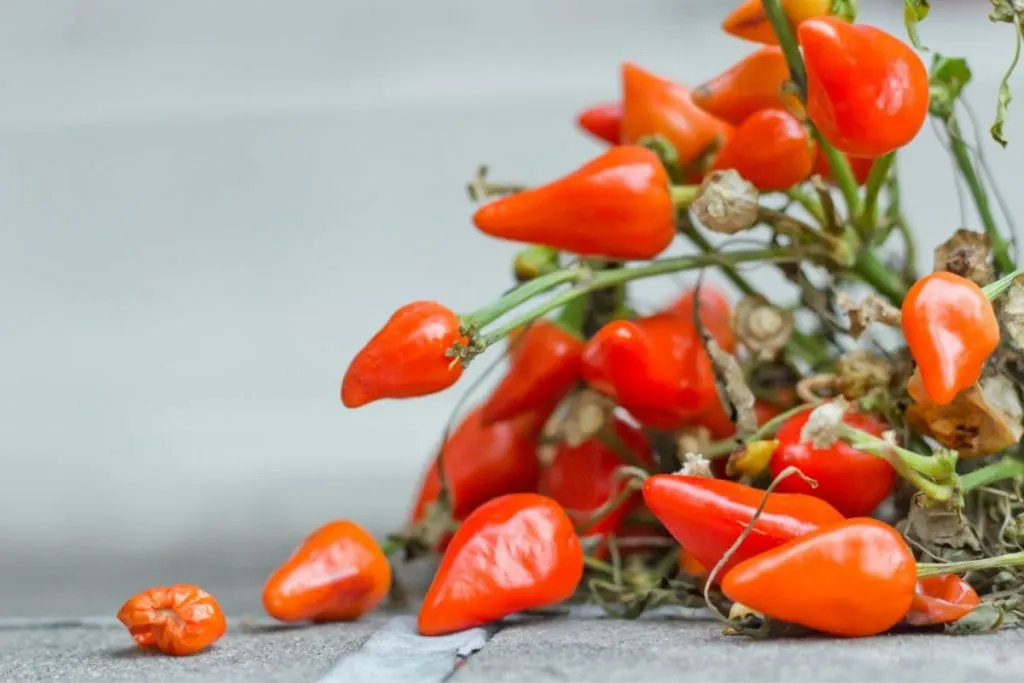
I hope that in today’s article, how often to water pepper plants, you learned a lot about that, and other questions that we answered throughout the article.
If you have not had vegetables in the garden until now, this is an extraordinary opportunity to get vegetables for the garden and to finally have your own organic garden, be it in front of the house in the yard or on the balcony in pots.
This wonderful vegetable, you have seen for yourself, does not require much care except for good light and watering. If you give the plant that, it will give you many fruits in return, not only a beautiful and fragrant appearance.
I hope you enjoyed today’s article. See you soon with more similar topics!

